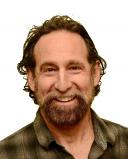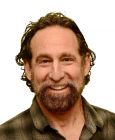Free Will
A Breakthrough On The Physical Science Of The Soul
Science's biggest gap is about to be filled, ending our age-old dark ages.
Posted January 13, 2015
Our debates about big philosophical and personal questions loop infinitely for lack of a scientific explanation for how the means-to-ends striving of living selves emerges from the determinism of cause-and-effect classical physical behavior.
How for example, could we resolve the circular debate over whether we have free will if we don't have a scientific explanation for what will (striving) is and how it emerged in a universe that shows no sign of it for the first 10 billion years?
For lack of a bridge from matter to mattering, mechanism to mind, we're stuck making up explanations with big explanatory gaps:
Ends-denialism: Nothing end-directed happens. Living selves are just cause-and-effect physio-chemistry as usual. Mind is all in your mind. (Gap: Then why the heck do selves behave so radically different from non-living systems?)
Immaterialism: There are immaterial things or property (e.g. soul, mind, will, desire, preference, God, higher power, appetite, drive, etc.) above and beyond (“more than the sum of”) the matter that constitutes our bodies. These immaterial forces cause physical effects. (Gap: How?)
Both/Andism: There's a little striving in everything. All atoms strive toward ends. Cause and effect and means to ends are the same. Rivers want to get to the ocean. Selves are what you get when enough of this striving stuff comes together (Gap: Then why the heck do selves behave so differently from non-living matter? Why is a river so deterministically striving when we aren’t?)
Gapism: It's beyond us to find the answer. (Gap: The whole thing)
We've been in the dark ages forever on the emergence of mattering from matter, information from energy, ends from effects, striving from mechanism, value from value-less cause and effect, evolution from non-evolution. We're so used to not having an answer that few have even considered the question, even though it’s the question behind all of our big questions. The camps above square off exposing each other’s gaps while ignoring their own.
Science and spirit, body and mind, intelligent design vs. evolution, determinism vs. free will, computers as intelligent vs. computers as dumb machines,us as intelligent vs us as dumb machines love vs. chemistry, one-reality vs. two (dualism), economics vs. physics—We cycle tediously on each of these for lack of a bridge on which to get traction working from the very real world of cause and effect behavior to the very real world of means to ends striving.
Still, I'm quite confident that with what we've learned in the last 200 years in dynamical system science, both about how it gets us closer to life yet doesn't get us to it, we will have a widely-accepted scientific explanation within ten years, one that's not much more complex than our explanation for lightning, something a 7th grader could understand.
Why am I confident? I've got a plausible one through the work of Terrence Deacon, that, if it doesn't solve it (I think it does), at least reveals and overlooked yet obvious approach that avoids the gappy solutions above, obvious, because it extends the logic behind the biggest scientific insight so far about life. The logic? Pay attention to what doesn’t happen, for example Darwin showing that what survives is a function of what doesn’t.
Here’s the short version: Everything we striving selves do boils down to cause-and-effect behavior, but not just any. Life is not something added, but a constraint on the cause and effect that occurs.
When there’s no constraint, anything goes and inevitably goes toward disorganization since there are way more disorganized states than organized ones.
So the question is how, despite this universal trend toward disorganization, organization happens. Technically, organization is correlation, things behaving together. The most obvious way organization happens is when constraint is imposed from the outside, water molecules run together when they’re constrained by a stream bed.
Water runs in spirals in a whirlpool, and yet the spiral is not imposed by some external constraint. Rather it emerges from internal conflict between turbulent currents, like traffic patterns resolving toward simpler, faster flows. This is called “self-organization” and some think that it gets us to selves. It doesn’t. The faster flows drain away the energy that makes them. A whirlpool drains your bathtub faster than turbulence. When the water is gone, the constraints that make it are gone—no water; no turbulence, no turbulence; no internal constraints; no self-organization. Self-organization is always self-defeating and anyway there’s no self.
Selves have an additional constraint: Their highly constrained behavior maintains the constraints that make their behavior highly constrained, so they can potentially go on indefinitely. You are a self in a 3.7 billion year old uninterrupted cycle of highly constrained behavior that maintains the constraints that make the behavior highly constrained. The behavior has changed of course, but that constraint-maintaining work cycle hasn’t.
So the trick is to explain how in a universe where all you’ve got is the tendency toward disorganization, and self-organization, this constraint-maintaining work cycle could ever get started. We have a molecular model. Here’s a short video presenting it. Deacon’s book Incomplete Nature explains the theory, but so carefully and technically that lots of readers get lost. I’m writing the short version, something between this article and Terry’s 650-page book. On the Origins of Selves: How means-to-ends striving emerged in a cause-and-effect universe. It will be out in 2015.
Image labeled for reuse




